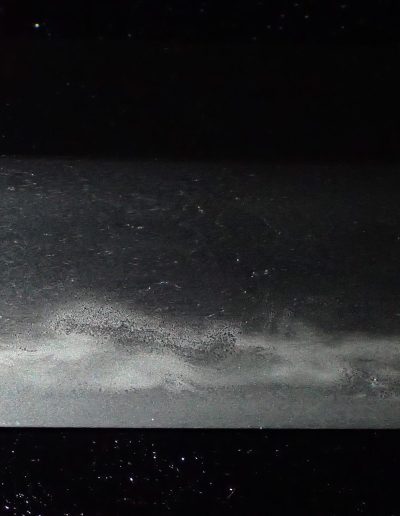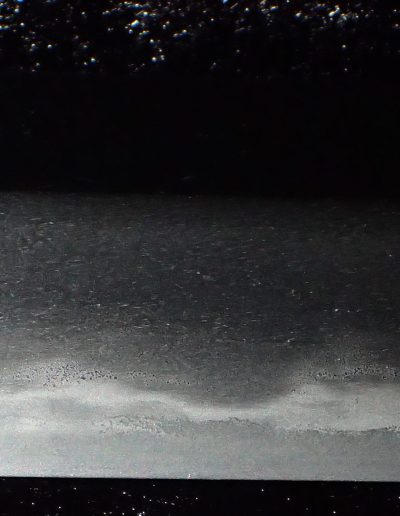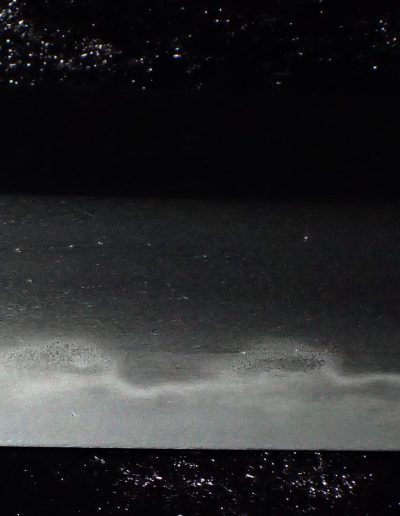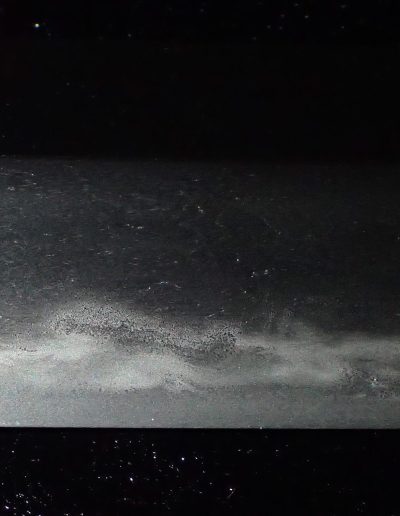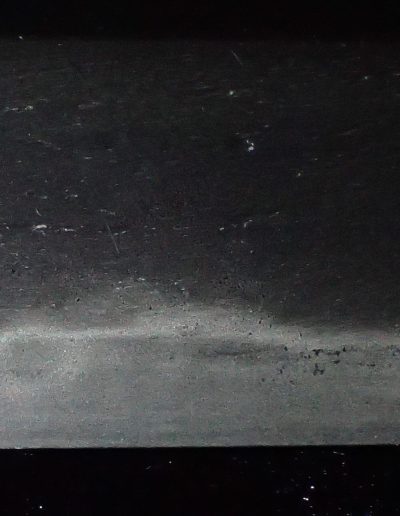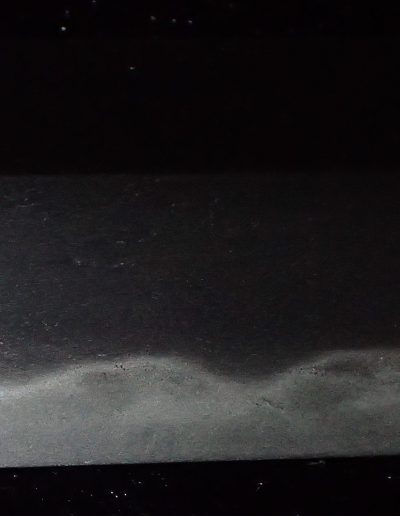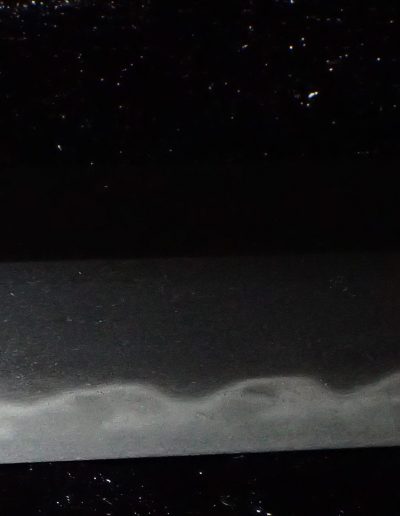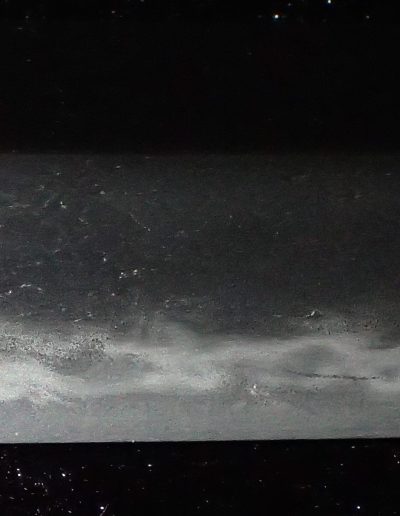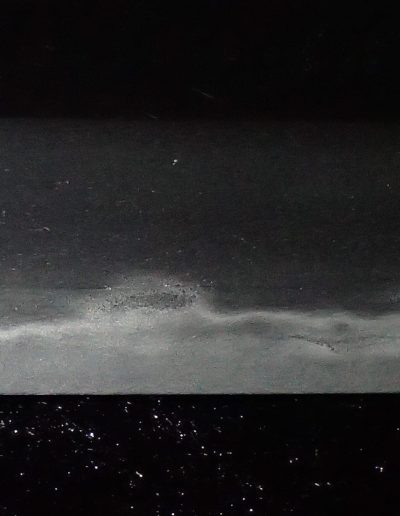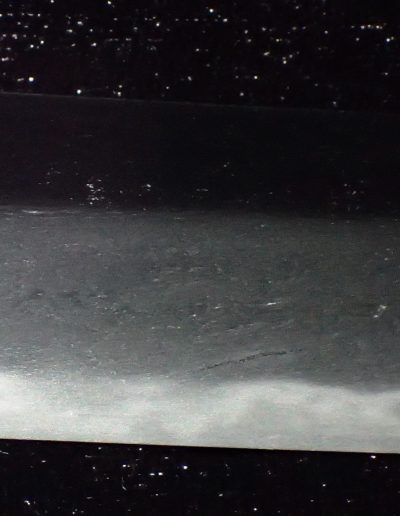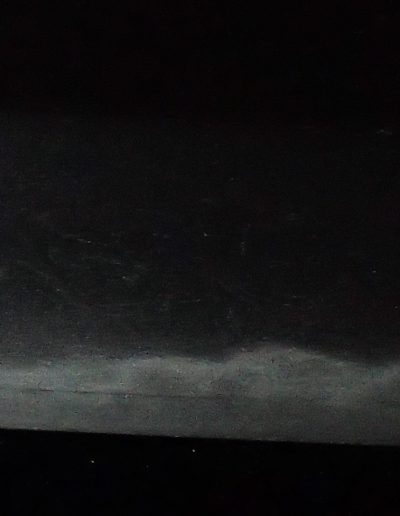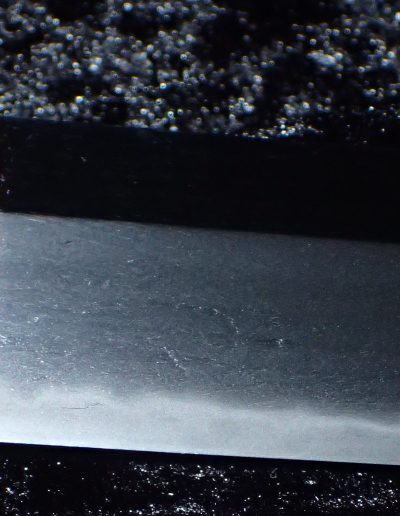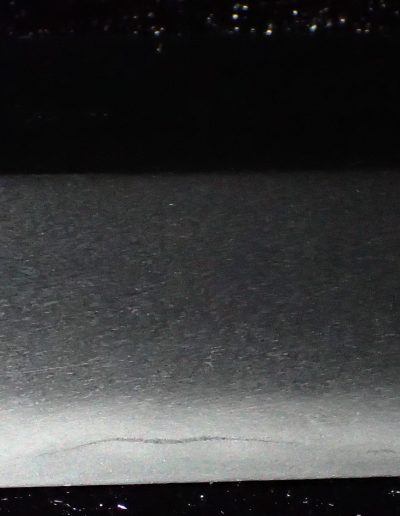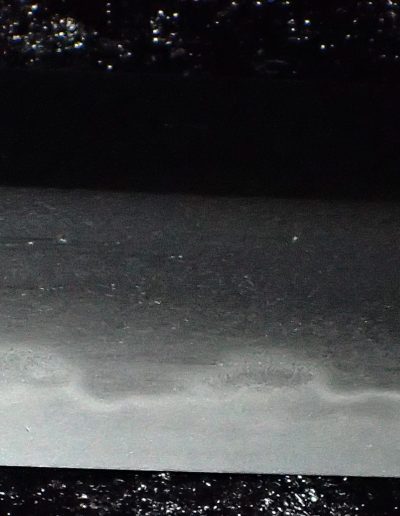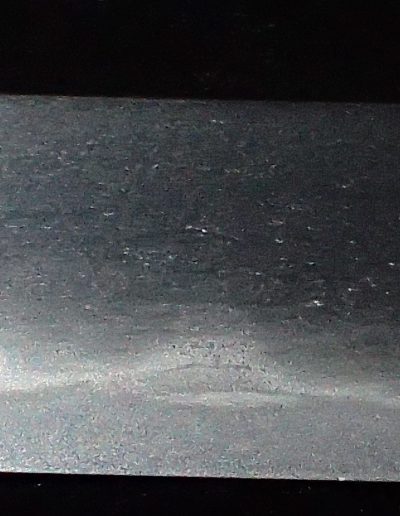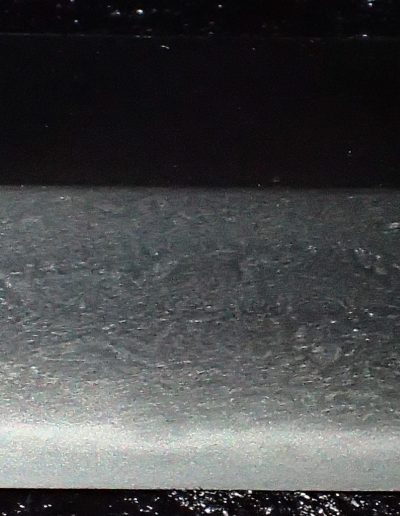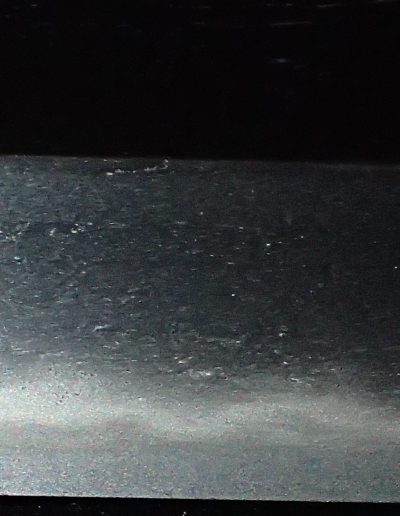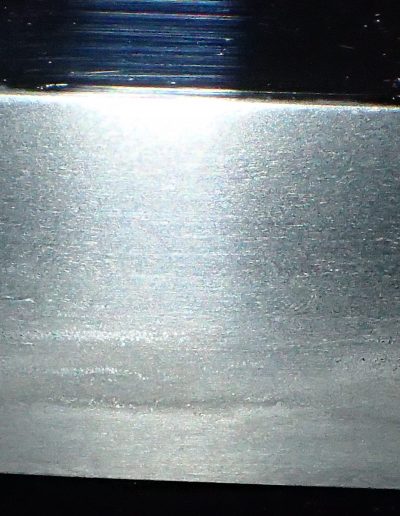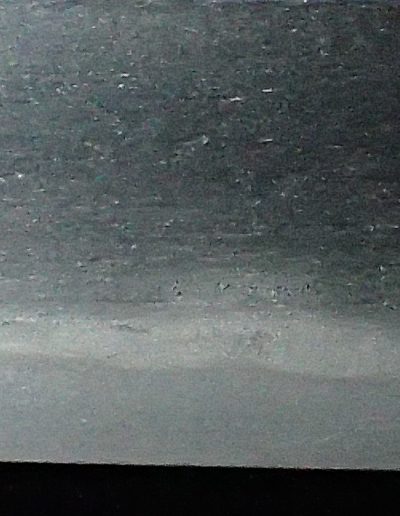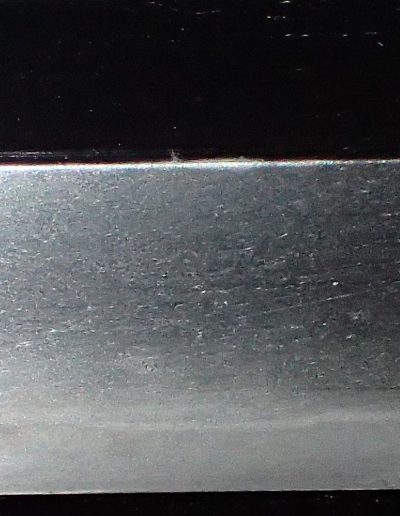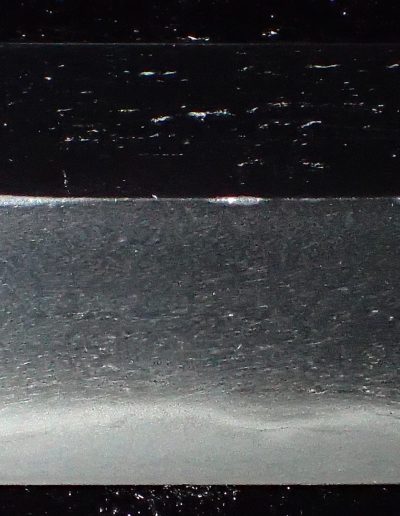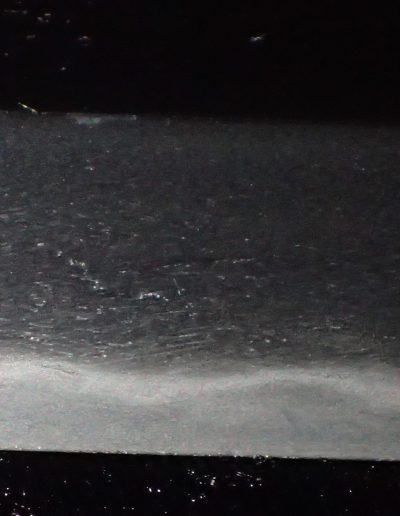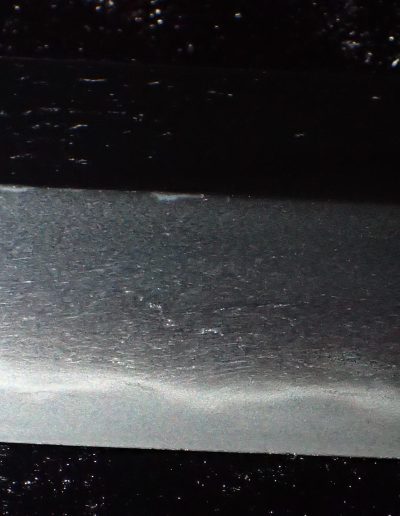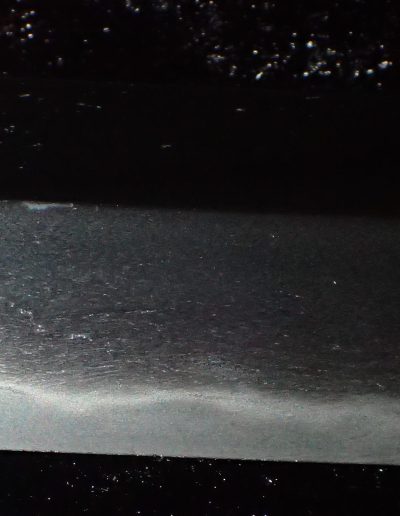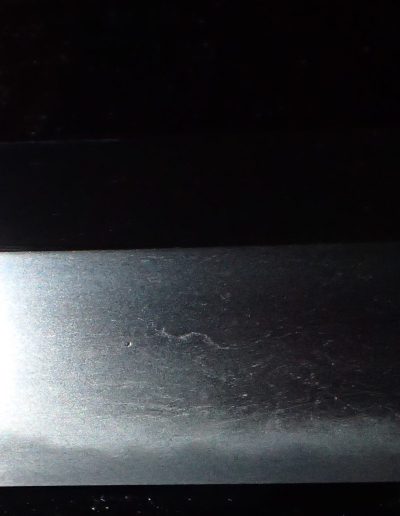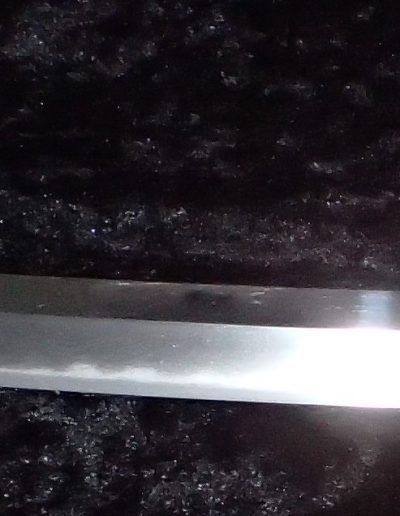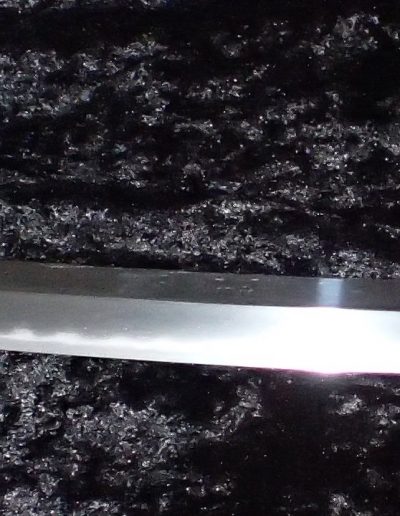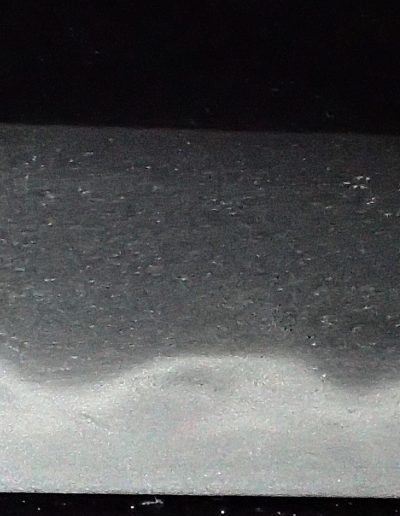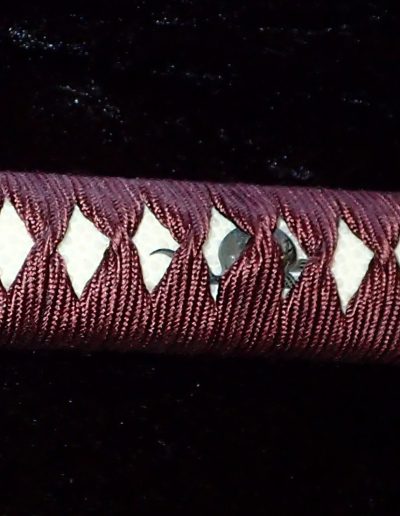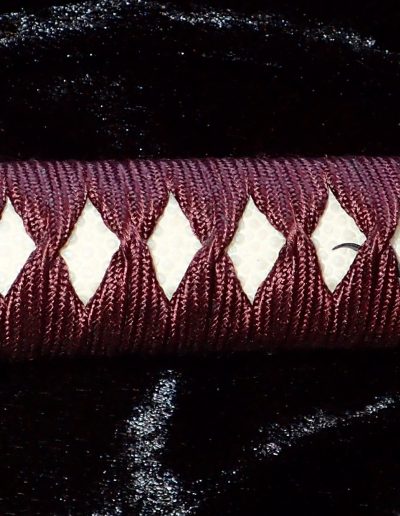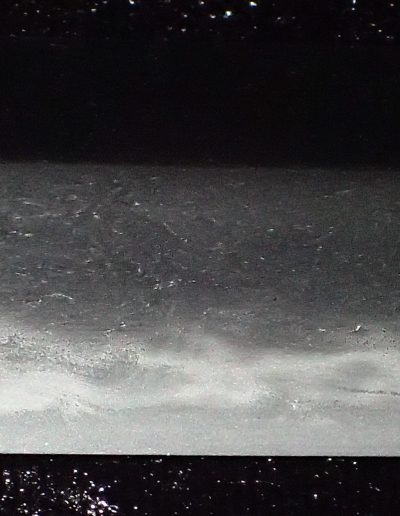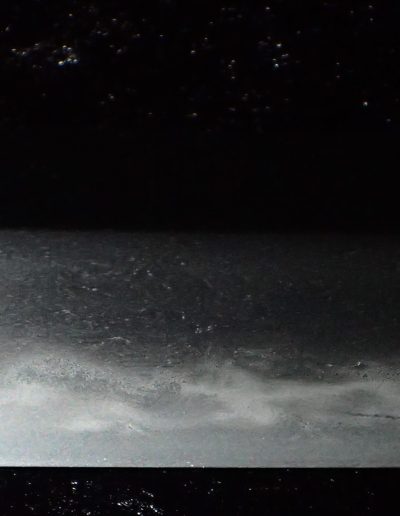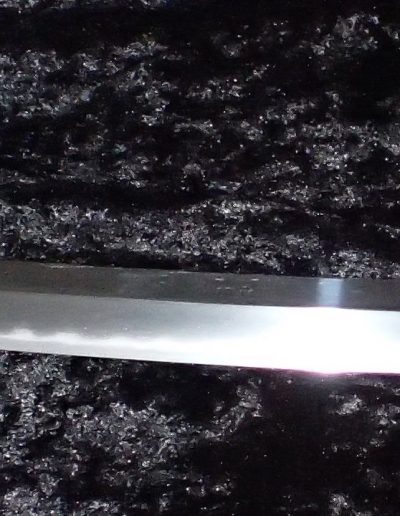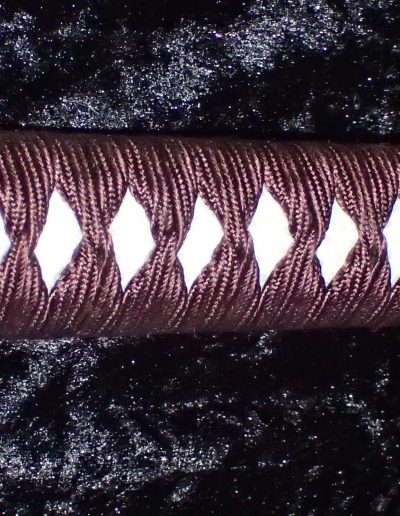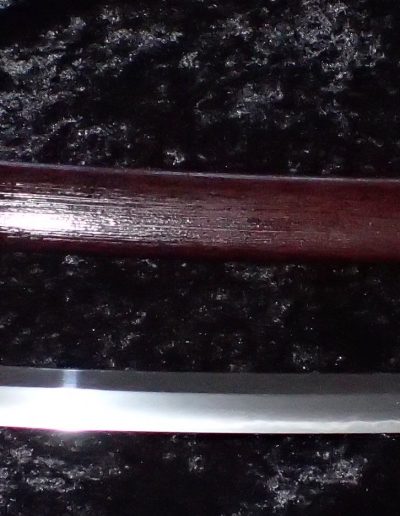Katana (⼑)
Den Yamato Shikkake Norinaga (伝⼤和尻懸則⻑) ‒ Attributed to Shikkake Norinaga from Yamato
nagasa 2 shaku 4 sun 6 bu kore ari (⻑さ⼆尺四⼨六分有之) ‒ Blade length ~ 74.5 cm
mei(銘⽂) ‒ Signature: bears a shu – mei
tsukurikomi (造り込み) ‒ Shape:
shinogi – zukuri , iori – mune
kitae (鍛) ‒ Forging:
rather dense itame
hamon (刃紋) ‒ Hardening:
connected gunome- midare with sunagashi
bōshi (鋩⼦) ‒ Hardening in tip:
sugu – chō with hakikake along the kaeri
Made around Bunpō Era (⽂保, 1317-1319)
NORINAGA (則長), 1st gen., Shōō (正応, 1288-1293), Yamato – “Yamato Norinaga” (大和則長), “Yamato Norinaga saku” (大和則長作), “Yamato no Kuni Shikkake-jū Norinaga saku” (大和国尻懸住則長作), “Yamato Shikkake-jū Norinaga saku” (大和尻懸住則長作), first name Tarōzaemon (太郎左衛門), Shikkake school, according to tradition the son of Norihiro (則弘), because there are no blades extant by Norihiro – who is considered as ancestor of the Shikkake school – the 1st gen. Norinaga as often regarded as actual founder of the school, he worked according to tradition in the vicinity of the old marketplace of Kishida village (岸田) in the Yamabe district (山辺) of Yamato province, he was active from about Shōō to Ryakuō (暦応, 1338-1342), there exists a tantō with the date signature of the
third year of Bunpō (文保, 1319) and the information “made at the age of 48” and a tantō with the date of the third year of Ryakuō (1340) and the age of 69, that means we can calculate his year of birth with Bun´ei nine (文永, 1272), there are tachi, tantō, and naginata are extant whereas tantō can also be in kanmuri-otoshi-zukuri or shōbu-zukuri, tachi have a shallower sori than contemporary blades, the jigane is an itame mixed with masame, ji-nie, chikei, and some yubashiri, and appears as socalled “Shikkake-hada” (mokume along the shinogi and masame along the hamon), the hamon is a suguha or suguha-chō mixed with uniform ko-gunome elements in nie-deki, in addition hotsure, nijūba, kinsuji, and sunagashi appear, the bōshi ist sugu, runs out as yakitsume, and tends with its hakikake often to kaen but can also appear as midare-komi, some hamon interpretations with uniform ko-gunome remind of the Dōei school (道永), this characteristic feature is already mentioned in the Keifun Ki


